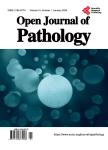Immunohistochemical Biomarkers in Ductal Carcinoma <i>In Situ</i>
Immunohistochemical Biomarkers in Ductal Carcinoma <i>In Situ</i>作者机构:Stem Cell Laboratory Center for Bone Marrow Transplants Brazilian National Cancer Institute—INCA Rio de Janeiro Brazil Division of Pathology Brazilian National Cancer Institute—INCA Rio de Janeiro Brazil
出 版 物:《Open Journal of Pathology》 (病理学期刊(英文))
年 卷 期:2020年第10卷第4期
页 面:129-146页
学科分类:1002[医学-临床医学] 100214[医学-肿瘤学] 10[医学]
主 题:Breast Cancer Ductal Carcinoma In Situ Immunohistochemistry Biomarker Proteins Categorization
摘 要:Introduction: Breast ductal carcinoma In Situ (DCIS) can be defined as a malignant epithelial proliferation with growth limited by the basal membrane of the ductal epithelium, with no evidence of stromal invasion. There has been a trend of trying to subcategorize DCIS based on cell proliferation assays (Ki67) and the expression of hormone receptors and the human epidermal growth receptor (HER-2) as detected by immunohistochemistry, similar to invasive breast carcinomas (IBC). The aims were to evaluate the expression of breast cancer marker proteins in DCIS by immunohistochemistry to better categorize it. Methods: 46 biopsies from women with DCIS and IBC Luminal A-like were evaluated by immunohistochemistry staining of proteins already known to be biomarkers in IBC. For controls, normal breast tissue from mammoplasty (n = 3) was used. Results: Our results showed an increase of estrogen receptor (ER) and progesterone receptor (PR) expression relative to that in normal tissue samples (p Conclusion: The biology of DCIS is not well understood given the complexity and heterogeneity of the disease, which makes it important to better sub-categorize this tumor, especially considering the possibility of identifying DCIS cases with the potential for recurrence and evolution into IBC.



